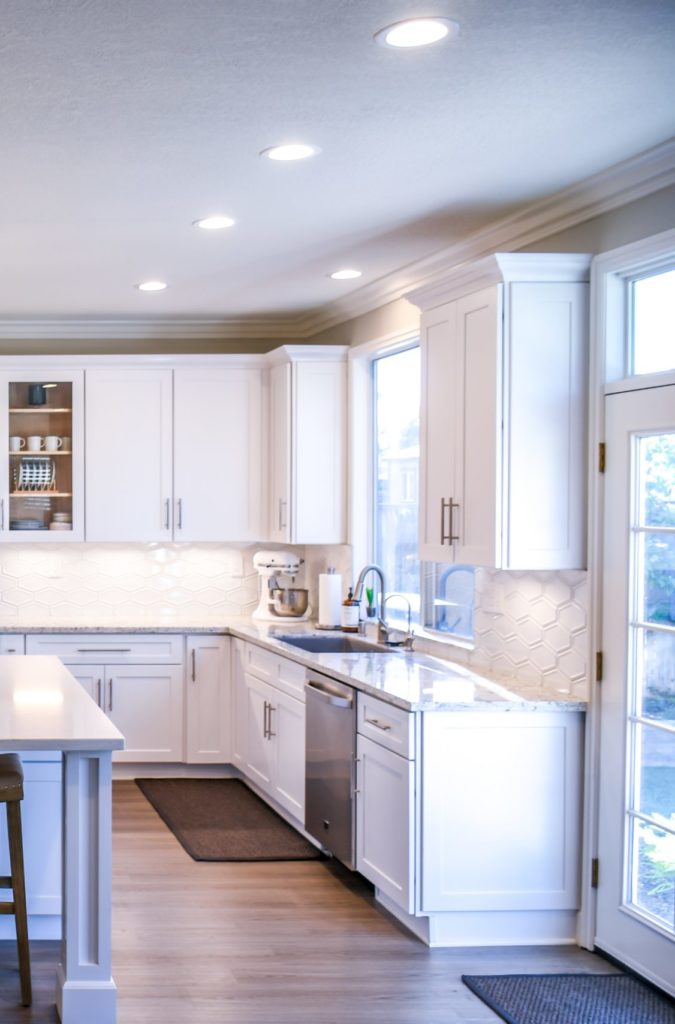People living with Alzheimer’s disease or other related dementias can experience their world as confusing, disorienting, disabling, and even dangerous, as their disease progresses. A well-designed environment that is purposely planned with the impairments and behaviors resulting from disease in mind, help your loved one maintain his/her abilities and provide meaningful engagement opportunities to increase quality of life.
Best Colors and Patterns for Dementia Spaces
Aside from a general decline in eyesight that often comes with age, dementia can also affect how your loved one with dementia sees colors and patterns. Bright colors stand out and can be helpful to draw attention to items of importance. Patterns can appear confusing and provide the sensation of being in motion for those with dementia.

Knowing how different colors and patterns are viewed can be helpful for preventing falls or addressing avoidance. Typically, solid colors are easier for the eyes of those living with dementia to see. Brighter colors also pop more and can be helpful if you need to make something easy to find for your loved one (e.g., a railing to prevent falls or a light switch). If patterns are being utilized in the space, less complex patterns work best.
A brighter color may be useful in furniture décor if your loved one experiences frequent falling when sitting. For example, a bright colored chair cushion or a colored toilet seat can greatly reduce the chances of a fall. Bright objects can also be placed on your front door or your loved one’s bedroom as a way to jog memory and make those spaces easier to locate.
In contrast, darker colors like black and navy may cause undesired avoidance depending on the placement. A black mat or rug may appear to your loved one as a hole in the ground that they should avoid stepping “into.” Remove mats in areas where you may have seen some avoidance issues. For example, a dark bath mat may cause someone suffering from dementia to avoid showers.
Another common vision difficulty for those living with dementia is that objects appear flat and lose dimensionality. For example if you had a wooden dresser with knobs of a similar tone of wood, it may be difficult for your loved one to grasp the knobs and open the drawers. Swapping out the hardware out for a more contrasting color, such as white in this case, would make opening the drawer or cabinet much easier.
Proper Lighting Improves Dementia Outcomes

Ensuring spaces for those with Alzheimer’s disease or other related dementias have effective lighting is essential. Proper lighting allows your loved one with dementia to better read facial expressions and body language of visitors and caregivers, as well as have an overall better understanding of what is happening in his/her surroundings. Bad lighting is also a hazard for increasing falls, accidents, and stress. Proper lighting has health benefits as well, being clinically proven to reduce symptoms of depression.
Making use of natural light and supplementing with artificial lights whenever needed can be helpful. Reducing glare where possible also minimizes disorientation in those with dementia. Floor-level nightlights can also be an extremely useful addition to guide your loved one safely to and from the bathroom at night or for increased safety during wandering episodes.
For a person living with dementia, living at home can provide a sense of independence. By making some of the changes noted, your loved one can continue with the routines or activities he/she enjoys.
For additional questions relating to the safety of your loved one living with dementia: Ask Mimi
Sources:









